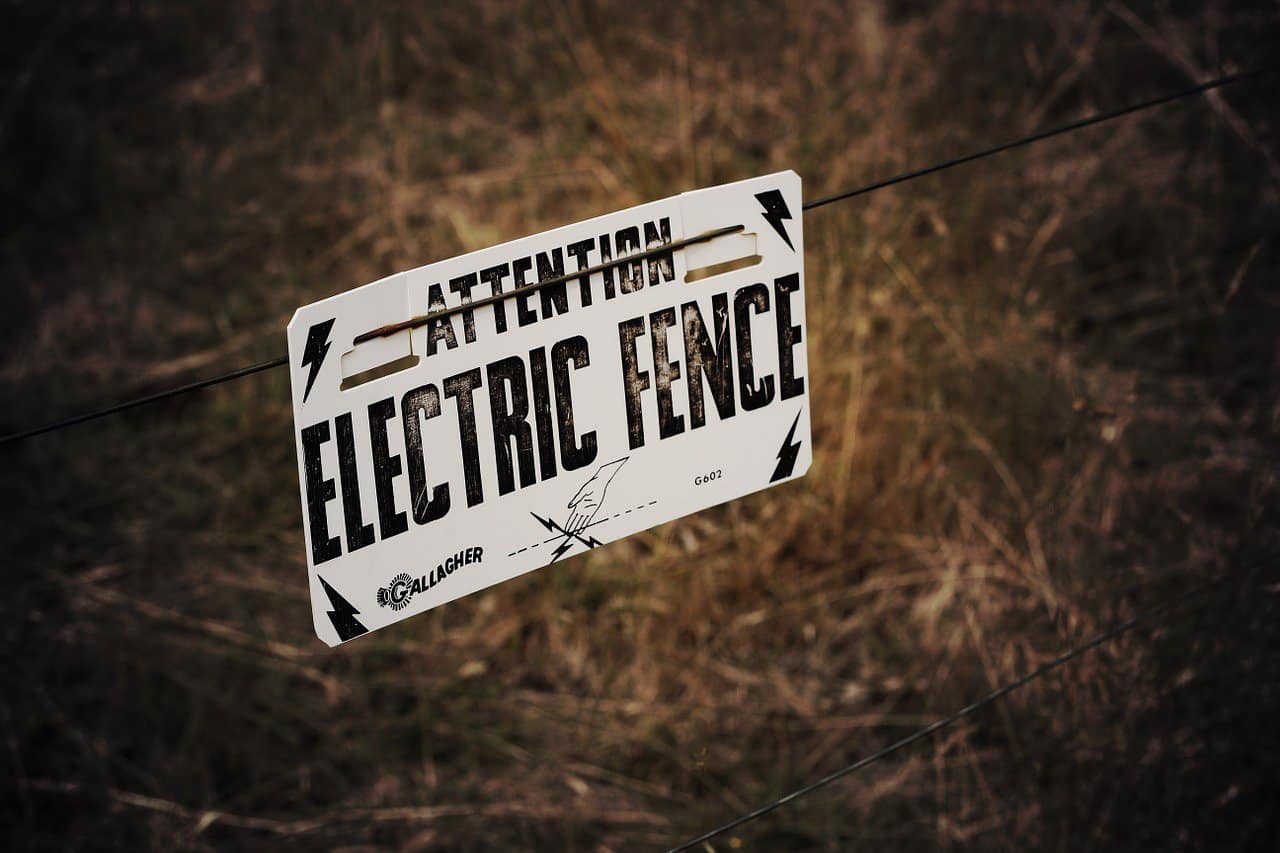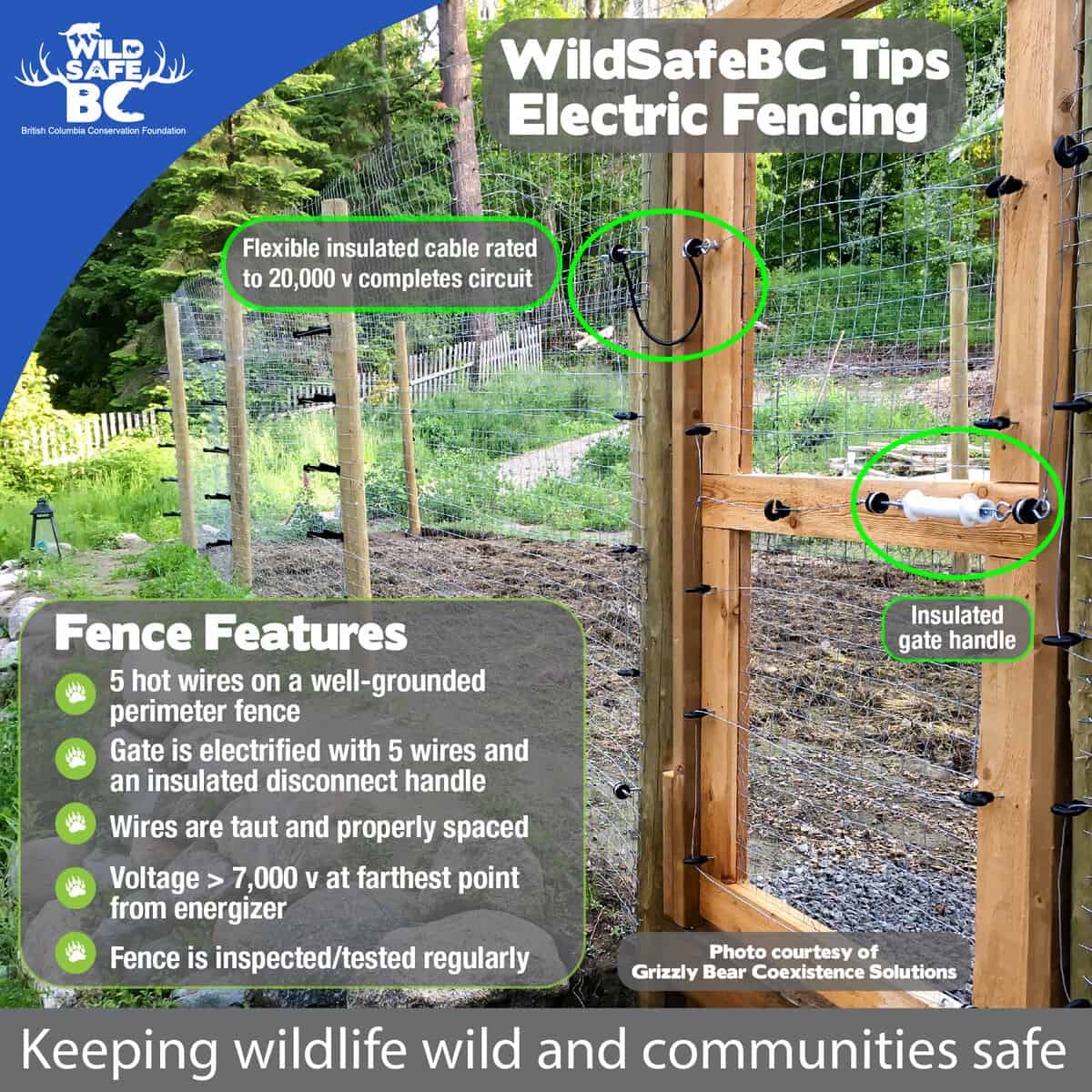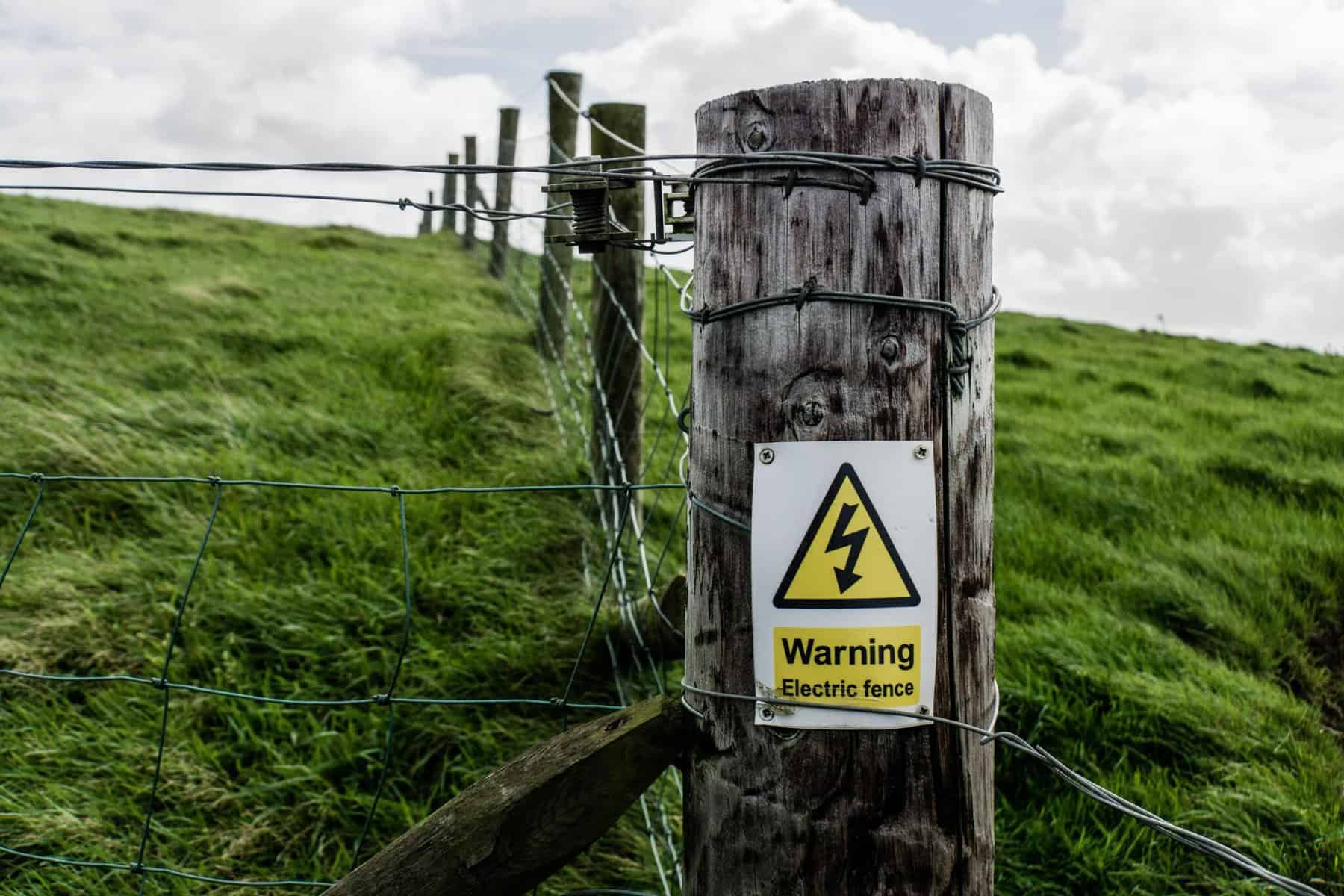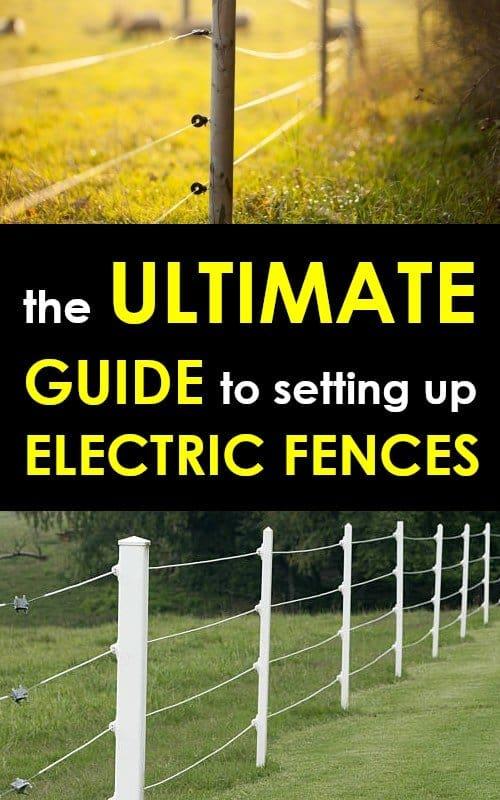Electric Fences for Home and Animal Security
Electric fences are an excellent tool for containing livestock and ensuring their safety, but it’s important to remember that they can also pose risks if not used correctly. From proper installation and maintenance to understanding voltage and using warning signs, these guidelines will equip you with the knowledge you need to keep your animals safe while enjoying the benefits of an electric fence.
Selecting the Right Equipment
Choosing the Right Electric Fence Charger
When it comes to selecting the right equipment for your electric fence, choosing the right electric fence charger is crucial. The charger, also known as the energizer, is responsible for delivering a safe yet powerful electrical charge to your fence. It is essential to choose a charger that matches the needs of your specific fence system. Factors to consider include the length of the fence, the type of animals you are containing or excluding, and the power source available. By selecting the right charger, you can ensure optimal performance and effectiveness of your electric fence system.
Selecting the Right Wire
Selecting the right wire is another important aspect of installing an electric fence. The wire serves as the conductor for the electrical current and needs to be able to withstand the strain and tension that animals or external forces may put on it. It is important to choose a high-quality wire that is both durable and conductive. Factors to consider when selecting the wire include the type of animals being contained or excluded, the distance of the fence, and the level of conductivity required. By choosing the right wire, you can maintain the integrity and functionality of your electric fence system.
Determining the Right Fence Height
Determining the right fence height is crucial to ensure the effectiveness of your electric fence. The height of the fence should be appropriate for containing or excluding the animals you are dealing with. Factors such as the size, jumping ability, and behavioral tendencies of the animals should be taken into consideration. It is important to install a fence that is tall enough to prevent the animals from jumping over, while also considering any specific regulations or guidelines that may be in place. By selecting the right fence height, you can ensure the safety and security of your livestock or property.
Proper Installation
Ensuring Proper Grounding
Proper grounding is essential to the safety and effectiveness of an electric fence. The grounding system provides a path for the electrical current to flow into the ground, completing the circuit. It is important to ensure that the grounding system is installed properly and meets the recommended standards. This involves burying galvanized ground rods at specific intervals and connecting them to the fence charger with the appropriate grounding wire. By ensuring proper grounding, you can minimize the risk of electrical malfunctions and ensure the safety of both animals and humans.
Installing Lightning Protection
Lightning can pose a significant threat to electric fence systems. Therefore, it is important to install proper lightning protection to safeguard your fence from potential damage. Lightning protection devices, such as lightning arrestors or surge suppressors, can be installed to divert the electrical surge caused by lightning strikes away from your fence. These devices are typically connected between the charger and the grounding system. By installing lightning protection, you can mitigate the risk of damage to your electric fence during thunderstorms and severe weather conditions.
Properly Connecting Wires and Posts
Properly connecting wires and posts is crucial to ensure the stability and effectiveness of your electric fence. It is important to securely attach the wires to the posts using appropriate insulators to prevent them from coming into contact with the ground or vegetation. Additionally, all wire connections and splices should be made using approved connectors or crimp sleeves to maintain a consistent electrical flow throughout the fence. By ensuring proper wire and post connections, you can prevent electrical shorts and maintain the integrity of your electric fence system.

Inspecting and Maintaining the Fence
Regularly Checking the Charger
Regularly checking the charger is essential to ensure the proper functioning of your electric fence system. It is important to monitor the charger for any signs of damage or malfunction, such as loose connections, corrosion, or faulty wiring. Additionally, it is crucial to check the charger’s power source, whether it be batteries or mains electricity, to ensure that it is supplying the necessary electrical charge to the fence. Regular inspections and maintenance of the charger will help prevent any potential issues that could compromise the effectiveness of your electric fence.
Checking the Voltage Levels
Checking the voltage levels of your electric fence is an important part of maintaining its functionality and effectiveness. Voltage levels can fluctuate over time due to various factors, including vegetation growth, weather conditions, and the presence of animals. Regularly testing the voltage levels of your fence with a voltmeter or voltage tester will help you identify any drops or inconsistencies in the electrical charge. If the voltage levels are not within the recommended range, it may indicate a problem with the charger, wire connections, or grounding system. By regularly checking the voltage levels, you can address any potential issues and ensure the proper functioning of your electric fence.
Inspecting and Replacing Worn-out Parts
Inspecting and replacing worn-out parts is crucial to maintain the effectiveness and safety of your electric fence. Over time, certain components of the fence, such as insulators or wire, may become worn or damaged. It is important to regularly inspect the fence for any signs of wear, including broken insulators, loose wires, or rusted posts. Any worn-out or damaged parts should be promptly replaced to ensure the structural integrity and functionality of the fence. By regularly inspecting and replacing worn-out parts, you can prevent potential hazards and extend the lifespan of your electric fence.
Ensuring Adequate Warning Signs
Placing Visible Warning Signs
Placing visible warning signs is an important aspect of ensuring the safety of individuals who may come into contact with your electric fence. Warning signs should be strategically placed at regular intervals along the fence to alert people of the presence of an electric current. These signs should include clear and concise warnings, such as “Danger: Electric Fence.” By placing visible warning signs, you can effectively communicate the potential hazards associated with your electric fence and minimize the risk of accidental contact.
Using Reflective Materials
Using reflective materials on your warning signs can enhance the visibility and effectiveness of your electric fence warnings, especially during low light conditions. Reflective materials, such as reflective tape or reflective stickers, can help draw attention to the warning signs from a distance. This is particularly important in areas where visibility may be reduced, such as along roadways or in areas with dense vegetation. By using reflective materials, you can increase the visibility of your warning signs and further enhance the safety of your electric fence.
Properly Positioning Warning Labels
In addition to visible warning signs, it is important to properly position warning labels on your electric fence system. Warning labels should be affixed to the charger, gates, and any other accessible areas where individuals may approach the fence. These labels should clearly indicate the presence of an electric current and provide instructions on how to safely interact with the fence. By properly positioning warning labels, you can ensure that anyone who may come into contact with your electric fence is fully aware of the potential hazards and can take appropriate precautions.

Protecting Livestock and Wildlife
Preventing Animal Entrapment
When designing and installing an electric fence, it is important to take measures to prevent animal entrapment. An electric fence should be constructed in a way that allows animals to see and recognize the presence of the fence, thereby preventing them from becoming trapped. This can be achieved by maintaining adequate visibility, ensuring a consistent electrical charge throughout the fence, and regularly trimming vegetation that may obstruct the view of the fence. By preventing animal entrapment, you can minimize the risk of injury or distress to the animals and maintain a safe and humane electric fence system.
Avoiding Potential Entanglements
In order to protect both animals and the integrity of your electric fence, it is important to avoid potential entanglements. This can be achieved by using appropriate spacing between wires or strands of the fence to prevent animals from getting caught or tangled. Additionally, it is important to regularly inspect the fence and adjacent areas for any obstructions or potential hazards, such as fallen branches or debris. By avoiding potential entanglements, you can ensure the safety and well-being of both the animals and the electric fence system.
Providing Safe Escape Routes
In the event that an animal does come into contact with an electric fence, it is important to provide safe escape routes. This can be done by installing gates or openings at regular intervals along the fence, as well as ensuring that the gaps between wires or strands are large enough for animals to pass through without getting trapped. By providing safe escape routes, you can minimize the risk of injury to the animals and allow them to freely move within their designated areas.
Maintaining a Safe Distance
Keeping Children and Untrained Individuals Away
To maintain a safe environment around your electric fence, it is important to keep children and untrained individuals at a safe distance. Electric fences can pose a significant risk to those who are unaware of their presence or who do not understand how to safely interact with them. It is crucial to educate children and others about the potential dangers associated with electric fences and to prohibit them from approaching or touching the fence without proper supervision or training. By keeping children and untrained individuals away from the fence, you can minimize the risk of accidents and ensure their safety.
Separating Other Structures from the Fence
When installing an electric fence, it is important to consider the proximity of other structures or objects to the fence. This includes buildings, trees, or other types of infrastructure. It is recommended to maintain a safe distance between the fence and these structures to prevent potential damage or interference. Vegetation should also be regularly trimmed to prevent it from coming into contact with the fence and potentially causing a short circuit. By separating other structures from the fence, you can minimize the risk of damage and ensure the effective operation of your electric fence system.
Avoiding Contact with Overhanging Trees
Overhanging trees can pose a risk to the effectiveness and safety of your electric fence system. Tree branches that come into contact with the fence can cause electrical shorts or interfere with the electrical charge. It is important to regularly trim overhanging branches or ensure a safe distance between the fence and any nearby trees. By avoiding contact with overhanging trees, you can maintain a consistent electrical flow and prevent potential hazards or malfunctions.

Understanding Local Regulations
Researching Local Zoning and Codes
Before installing an electric fence, it is important to research and understand the local zoning and codes that may apply to your property. Different areas may have specific regulations or restrictions regarding the installation and use of electric fences. These regulations may include requirements for fence height, setbacks from property lines, or permits that need to be obtained. By researching and complying with local zoning and codes, you can ensure that your electric fence is installed in accordance with the law and avoid any potential legal issues.
Obtaining Necessary Permits
In some cases, obtaining necessary permits may be required before installing an electric fence. This can vary depending on the location and specific regulations of your area. It is important to check with the relevant authorities or building departments to determine whether any permits or approvals are needed. By obtaining the necessary permits, you can ensure that your electric fence is installed legally and in compliance with local regulations.
Abiding by Boundary Requirements
When installing an electric fence, it is important to respect and abide by boundary requirements. This includes ensuring that the fence is installed within your property boundaries and does not encroach onto neighboring properties or public lands. It is recommended to consult with a surveyor or use boundary markers to accurately establish and demarcate your property lines. By abiding by boundary requirements, you can avoid potential disputes with neighbors or legal complications related to the installation of your electric fence.
Knowing Emergency Procedures
Knowing How to Shut Off the Electric Current
In case of emergencies or maintenance needs, it is important to know how to shut off the electric current to your fence. This can be done by locating the main power source or disconnecting the charger from the power supply. It is crucial to familiarize yourself with the specific shutdown procedures for your electric fence system and to ensure that they are clearly communicated to other individuals who may need to operate the system in your absence. By knowing how to shut off the electric current, you can quickly respond to emergencies or perform necessary maintenance tasks safely.
Preparing for Fire or Rescue Situations
In the event of a fire or rescue situation, it is important to take proper precautions to ensure the safety of emergency response personnel. This includes providing clear instructions or signage indicating the presence of an electric fence and ensuring that access points or gates are easily identifiable and accessible. It is also recommended to incorporate fire breaks or gaps in your fence design to allow emergency personnel to quickly access the affected areas. By preparing for fire or rescue situations, you can assist emergency responders in carrying out their duties effectively and safely.
Having Emergency Contact Information
To further ensure the safety of your electric fence system, it is important to have readily available emergency contact information. This includes the contact information for local electricity providers, as well as any relevant emergency services in your area. In the event of an electrical malfunction, power outage, or other emergency situations, having this information easily accessible can help expedite the necessary actions and restore the functionality of your electric fence system. By having emergency contact information, you can quickly respond to any unexpected situations and ensure the safety and security of your property.

Educating Family and Employees
Providing Proper Training
When implementing an electric fence system, it is crucial to provide proper training to family members or employees who may interact with or be responsible for the fence. Training should include instructions on how to safely approach or cross the fence, how to shut off the electric current, and what to do in case of emergencies. It is important to emphasize the potential dangers associated with electric fences and to teach individuals how to identify and respond to any issues or malfunctions. By providing proper training, you can empower your family members or employees to safely and effectively operate the electric fence system.
Explaining Safe Practices
In addition to providing training, it is important to explain and reinforce safe practices when it comes to interacting with the electric fence. This includes emphasizing the importance of keeping a safe distance, not leaning on or touching the fence, and being aware of the potential hazards associated with the fence. It is important to clearly communicate and educate individuals on the safe practices that should be followed to minimize the risk of accidents or injuries. By explaining safe practices, you can ensure that everyone who interacts with the electric fence is knowledgeable and takes necessary precautions.
Facilitating Regular Safety Meetings
To maintain a culture of safety around your electric fence system, it is beneficial to facilitate regular safety meetings with family members or employees. These meetings can serve as a platform to discuss any new safety procedures or guidelines, address any concerns or questions, and reinforce the importance of following safe practices. Regular safety meetings also provide an opportunity to share any updates or changes to the electric fence system and ensure that everyone is informed and aware of their responsibilities. By facilitating regular safety meetings, you can create a proactive and informed approach to maintaining the safety of your electric fence.
Regularly Evaluating Fence Effectiveness
Testing the Electrical Flow
Regularly testing the electrical flow of your electric fence is essential to ensure its effectiveness. This involves using a voltmeter or voltage tester to measure the voltage levels at various points along the fence. By conducting regular tests, you can identify any areas where the electrical flow may be compromised, such as loose wires, faulty connections, or vegetation growth. If any weak areas are identified, they should be promptly addressed to maintain a consistent and effective electrical charge throughout the fence. By testing the electrical flow, you can ensure that your electric fence is operating at its optimal level.
Addressing Weak Areas
When evaluating the effectiveness of your electric fence, it is important to identify and address any weak areas that may compromise its performance. This includes inspecting the fence for any signs of damage, wear, or insecure connections. Weak areas can include broken insulators, loose wires, or rusted posts. These areas should be repaired or replaced as necessary to maintain the integrity of the fence and ensure its effectiveness. By addressing weak areas, you can prevent potential breaches or escape incidents and maintain a secure and reliable electric fence system.
Modifying the Fence Layout if Necessary
As the needs of your property or livestock change, it may be necessary to modify or adapt the layout of your electric fence. This could include adding additional wires, adjusting the height of the fence, or relocating certain areas of the fence. Modifying the fence layout can help address any new challenges or specific requirements that may arise over time. It is important to carefully plan and implement any modifications to ensure that they are done in accordance with local regulations and that the integrity and effectiveness of the fence are maintained. By modifying the fence layout if necessary, you can ensure that your electric fence continues to meet your specific needs and objectives.
Conclusion
Selecting the right equipment, properly installing and maintaining the fence, ensuring adequate warning signs, protecting livestock and wildlife, maintaining a safe distance, understanding local regulations, knowing emergency procedures, educating family and employees, and regularly evaluating fence effectiveness are all crucial aspects of ensuring the safety and functionality of an electric fence system. By following these guidelines and taking the necessary precautions, you can create a secure and reliable electric fence system that effectively contains or excludes animals while promoting the safety of both humans and wildlife.



